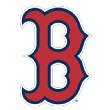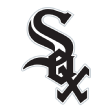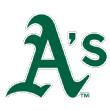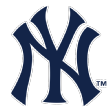Though he entered Tuesday having collected just two hits over his past five games, Cody Bellinger is in the midst of a remarkable season. After setting a National League rookie record for home runs in 2017 but then falling victim to something of a sophomore slump last year, Bellinger spent the winter not only working to restore the mechanics of his swing to their 2017 state but to gain a better understanding of why they worked and how pitchers approached him. The results have been eye-opening. The 24-year-old slugger is tied for the NL lead with 42 homers, and leads in the FanGraphs version of wins above replacement (6.8 fWAR). He may well win NL MVP honors, and he even more clearly deserves to be called the league's most improved player.
Toward that end, last week I attempted an objective search for the majors' most improved players via a deep dive into the pages of FanGraphs' Season Stat Grid, which allows users to view as many as 11 seasons worth of data in a single category and track and rank year-to-year totals. I chose 10 statistical categories in which we might look for significant changes and awarded 30 points for the largest change in each category, 29 for the second-largest and so on down to the 30th. There were a couple other wrinkles, but the take-home was that Bellinger did indeed come out on top, with the Red Sox's Rafael Devers -- whose strong 2019 season had inspired my search in the first place -- running second.
This time around, I've rerun the rankings, eliminating one category (clutch) that's not really-skill based and eschewing my double-weighting of wRC+ and WAR, both of which are already double-crediting some of the other categories I did include. (Namely batting average, on-base and slugging percentages, strikeout and walk rates, out-of-zone swing rate, and fielding -- ultimate zone rating plus the positional adjustment.) I've also eliminated a tedious step of divvying up rankings points in the case of virtual ties; where two players might appear to have improved by 3.5 WAR but in one case it's 3.52 and the other 3.48, those players are already ranked correctly on the site. With all that in mind, here's the leaderboard and their points in the given categories:
The results aren't much different than before; Tim Anderson slipped out of the top 10, replaced by Mark Canha. But this time, I'm looking not just at the rankings but at which players are more likely to hold onto their gains, and which aren't, bringing considerations such as Statcast metrics, batted ball distributions, and so on to bear on my findings. Saying that a player won't maintain all of his gains shouldn't be considered a slight. These guys still qualify as among the most improved, I just believe that certain indicators suggest they're less likely to remain at this level.
Sticking around
 Cody Bellinger, Los Angeles Dodgers Bellinger was more than solid last year (.260/.343/.470, 120 wRC+, 3.6 fWAR), but this year's performance (.310/.407/.649, 166 wRC+, 6.8 fWAR) is on another level entirely. His breakthrough is particularly convincing because he's winning the most basic battle for control of the strike zone. He sits atop these rankings because he collected points in every category except for out-of-zone swing rate, but he has cut down on chases as well (from 28.3% to 27.0%). His swinging strike rate has dropped (12.3% to 9.8%), and so both his walk and strikeout rates have improved (the former from 10.9% to 13.9%, the latter from 23.9% to 16.9%).
Cody Bellinger, Los Angeles Dodgers Bellinger was more than solid last year (.260/.343/.470, 120 wRC+, 3.6 fWAR), but this year's performance (.310/.407/.649, 166 wRC+, 6.8 fWAR) is on another level entirely. His breakthrough is particularly convincing because he's winning the most basic battle for control of the strike zone. He sits atop these rankings because he collected points in every category except for out-of-zone swing rate, but he has cut down on chases as well (from 28.3% to 27.0%). His swinging strike rate has dropped (12.3% to 9.8%), and so both his walk and strikeout rates have improved (the former from 10.9% to 13.9%, the latter from 23.9% to 16.9%).
And while he's whiffing less, he's making better contact; via Statcast, his average exit velocity has climbed from 89.7 mph to 91.3 mph, his hard-hit rate from 38.6% to 48.0%, and his xwOBA (expected weighted on-base average) from .328 (50th percentile) to .437 (100th percentile). Plus he has spent a greater share of his innings in right field than at first base, where he has maximized his athleticism and his value. He's a superstar now.
 Rafael Devers, Boston Red Sox
Rafael Devers, Boston Red Sox
Devers scuffled in his first full season in the majors at age 21, batting .240/.298/.433 for a 90 wRC+, with -4.5 UZR at third base and just 1.0 fWAR. This time around, he has significantly improved his two-strike approach, which has helped to cut his strikeout rate from 24.7% to 16.2%, and he has taken aim at Fenway Park's Green Monster by more frequently elevating the ball to the opposite field. On defense, he has reached more balls and made fewer errors, improving to 1.6 UZR.
Particularly at his age, the overall results (.326/.373/.583, 142 wRC+, 5.4 fWAR) -- the last of which ranks fourth in the league -- suggest the Red Sox have found another cornerstone player, and perhaps a future MVP candidate if Mike Trout ever gets tired of winning the award.
 Yoan Moncada, Chicago White Sox
Yoan Moncada, Chicago White Sox
A highly regarded but somewhat polarizing prospect -- he topped FanGraphs' prospect list in 2017, but ranked "only" 17th on ESPN's -- the Cuban-born Moncada produced a respectable 3.1 fWAR in 203 games for the White Sox in 2017-18, but this year, the 24-year-old switch-hitter has moved well beyond simply holding his own.
He has taken a more aggressive approach at the plate, swinging at 33.2% of pitches outside the zone (up from 23.3%), but it has paid off. Not only has he cut his strikeout rate from 33.4% to 27.8%, he's scalding the ball; his 92.9-mph average exit velocity (up from last year's 90.6) ranks in the 98th percentile, and his isolated power (slugging percentage minus batting average) has jumped from .164 to .245. His overall numbers (.301/.356/.545, 22 HR, 164 wRC+, 4.2 WAR), not to mention above-average play at third base compared to subpar play at second, suggest that a run of All-Star appearances is about to begin.
 Ketel Marte, Arizona Diamondbacks
Ketel Marte, Arizona Diamondbacks
Elevating the ball with greater consistency and authority has paid big dividends for the 25-year-old Marte, who has nearly doubled his home run total (from 14 to 27) while hitting a snazzy .321/.3813/.572 (142 wRC+) -- those are all NL top-10 numbers -- well beyond last year's modest .260/.332/.437 (104 wRC+). He has done that while taking up regular duty in center field, where he has been a quick study, producing 7.4 UZR in about a half season of work, and he has improved his baserunning (advancement on hits and outs as well as stolen bases) by 4.1 runs as well. His 6.0 fWAR is more than double last year's total (2.5) and is topped only by Trout, Bellinger and reigning NL MVP Christian Yelich. Good stuff.
 Trey Mancini, Baltimore Orioles
Trey Mancini, Baltimore Orioles
Mancini's season has been one of the few highlights amid a bleak landscape of Orioles losses. He has gone from a very empty 24 homers last year, accompanied by a 93 wRC+ and -0.2 WAR, to a more robust 29 dingers with a 124 wRC+ and 2.2 WAR. The 27-year-old right fielder's strikeout and walk rates have both improved (from 6.9% to 9.2% for the former, and 24.1% from to 21.2% for the latter) and his ground ball rate has dropped significantly (from 54.6% to 46.0%). He's no star, but the O's can use all the above-average players they can get.
More likely to fade
 Scott Kingery, Philadelphia Phillies
Scott Kingery, Philadelphia Phillies
As a rookie last season, Kingery -- who had placed 33rd on Keith Law's Top 100 Prospects list -- utterly flopped ( .226/.267/.338, 62 wRC+, minus-0.1 WAR). Not helping matters was the fact that the Phillies generally stuck him at shortstop, where he had almost no experience as a professional, instead of second base, his natural position but one occupied by Cesar Hernandez. He has bounced around the diamond this year, spending most of his time in center field (covering for Odubel Herrerra's domestic violence suspension and Andrew McCutchen's injury) and third base (where Maikel Franco eventually earned a demotion to Triple-A).
Kingery has improved in several areas, to the point of hitting .273/.336/.499 for a 114 wRC+ with 2.3 fWAR. However, both his strikeout rate and swinging strike rate have gotten worse (the former from 26.0% to 28.5%, the latter from 13.6% to 14.9%), his overall xwOBA is just .318 (34th percentile), and he has fallen off to .248/.326/.438 (96 wRC+) since the All-Star break. That doesn't mean he's bound to give back all of his gains, just that he still has some adjustments to make before reaching his ceiling.
 James McCann, Chicago White Sox
James McCann, Chicago White Sox
McCann entered this year, his age-29 season, as the definition of a replacement-level player, producing a 75 wRC+ and a net of 0.0 fWAR in 452 career games since debuting in 2014. Last year, he produced a dreadful 58 wRC+ (.220/.267/.314) and minus-0.5 fWAR, and then was non-tendered by the Tigers in late November. He has turned over a new leaf in Chicago, and thus far has hit .282/.333/.471 with 15 homers, a 112 wRC+, and 2.1 fWAR, career bests across the board.
While his feel-good story culminated in an All-Star selection, his production has been driven by a .374 BABIP, 92 points ahead of last year. That's difficult for a slow-moving catcher who hits the ball on the ground more often than in the air to maintain, and it doesn't help that he's striking out more often (29.2%, up from last year's 25.4%, and backed by a paltry 5.8% walk rate) to boot.
 Carlos Santana, Cleveland Indians
Carlos Santana, Cleveland Indians
At 33 years old, the graybeard on this list has enjoyed quite a rebound upon returning to Cleveland after a year spent in Philadelphia. He has tightened an already disciplined approach, swinging at just 20.9% of pitches outside the zone; his 17.3% walk rate and .412 on-base percentage, both rank second in the AL behind Trout. Meanwhile, his exit velocity is up from 88.8 mph to 91.8 (a 93rd percentile showing); he has bopped 30 homers and slugged .541, up from last year's 24 homers and .414, and he has provided above-average defense (2.6 UZR) en route to 4.3 fWAR, more than double last year's 1.9. The only reasons for skepticism are his age in what is increasingly a young man's sport, and a spiking ground ball rate (46.7%, up from last year's 40.3%), but right now, all of this is working for him.
Playing regularly last year for the first time since 2015, Canha hit for a respectable 113 wRC+ (.249/.328/.449) with 17 homers and 2.0 WAR in just 411 PA last year. Nobody would have been surprised if he'd fallen off, but instead, the 30-year-old outfielder has boosted that to a 148 wRC+ (.279/.391/.545) with 22 homers and 3.1 fWAR in 368 PA. A very disciplined approach, in which he has cut his chase rate (from 31.1% to 25.3%), has helped his walk rate spike (from 8.3% to 13.0%), while his power has largely come from pulling the ball on 53.1% of balls in play, the majors' fourth-highest rate among players with at least 350 PA.
The thing about pulling with regularity is that teams counter it with more frequent shifts, dropping a player's BABIP. That could drag Canha's line down. So too could the ol' regression monster, given that his 14-point rise in xwOBA (from .341 to .355) suggests that at least some portion of this year's gains is overstated.
The versatility of "Le Machine" -- he slices, he dices, he has played at least 33 games each at first, second and third base -- has been a godsend for the Yankees, who have sent every regular to the injured list at one point or another save for Gleyber Torres and LeMahieu. The 31-year-old infielder's superficially modest batting line while playing half his games at Coors Field (.276/.321/.428) wasn't really very good last year (86 wRC+), but he has come down from altitude, sprayed hits galore all around the diamond, and added 52 points of wRC+ (138, via a .332/.378/.532 line).
With an NL batting title already under his belt, he's six points behind Michael Brantley in this year's AL race; if he closes the gap, he'll be the first player to win a batting title in both leagues. It's his ground-ball-oriented approach that warrants skepticism. Of the 19 qualified batters with his ratio of ground balls to flyballs at 1.7 or higher, only he and Starling Marte have reached 20 homers (he has a career-high 22). He's a good hitter, just not that good, and nobody should expect him to maintain his .402/.443/.589 line with men in scoring position, either.


